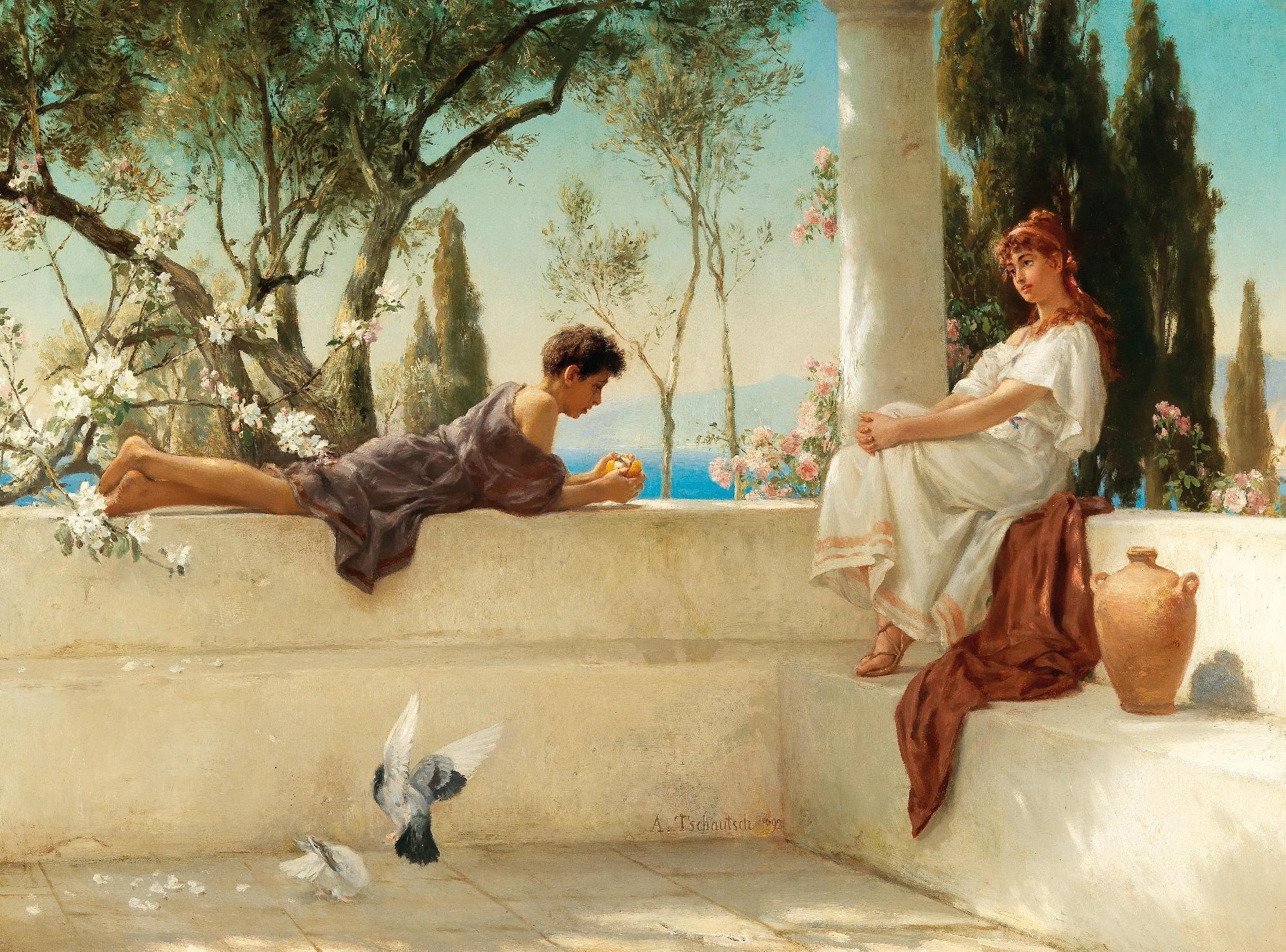
At the veranda by Albert Tschautsch, 1892
The Roman villa was one of the most intriguing aspects of ancient Roman daily life. Amidst the clatter of chariots and the echoes of political discourse, the Roman villa was a place of a certain culture and the concept known as “otium.” To practice otium meant doing a wide array of activities, intellectual pursuits, and social engagements that defined the lives of the Roman elite. Within the tranquil confines of their luxurious villas, otium found its truest expression, offering a sanctuary for relaxation, contemplation, and cultural refinement.
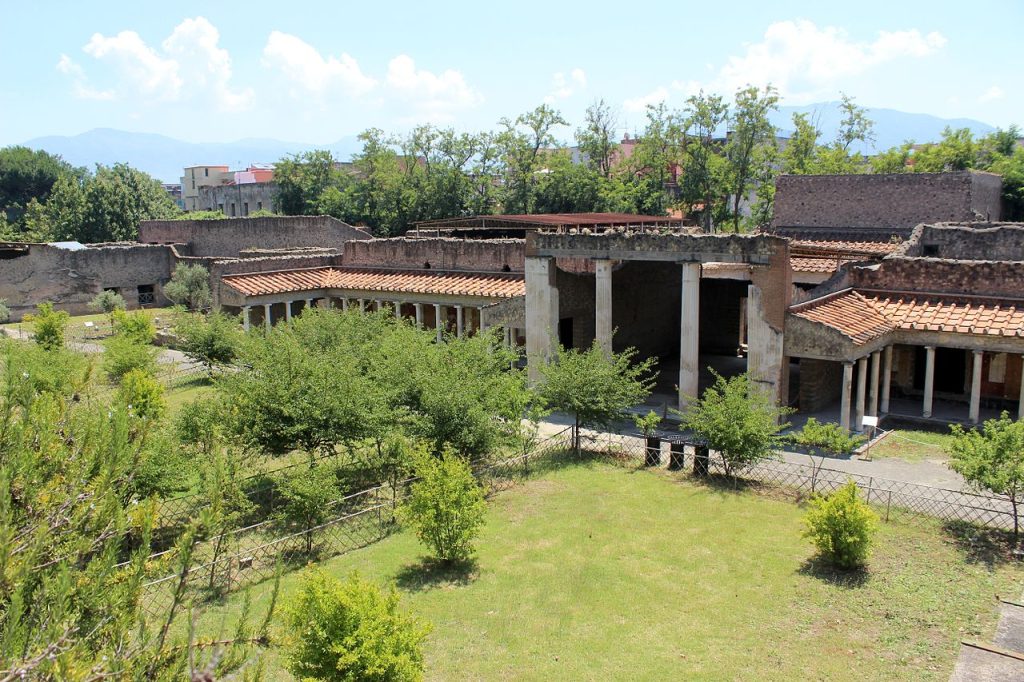
The Atrium: Heart of Social Interaction
At the center of every Roman villa, there was the atrium—a sanctuary of serenity adorned with statues, fountains, and lush greenery. Here, amidst the symphony of water and foliage, the Roman elite gathered for strolls and convivial conversation. The atrium served as the focal point of social interaction, where guests were welcomed with open arms and hospitality reigned supreme.
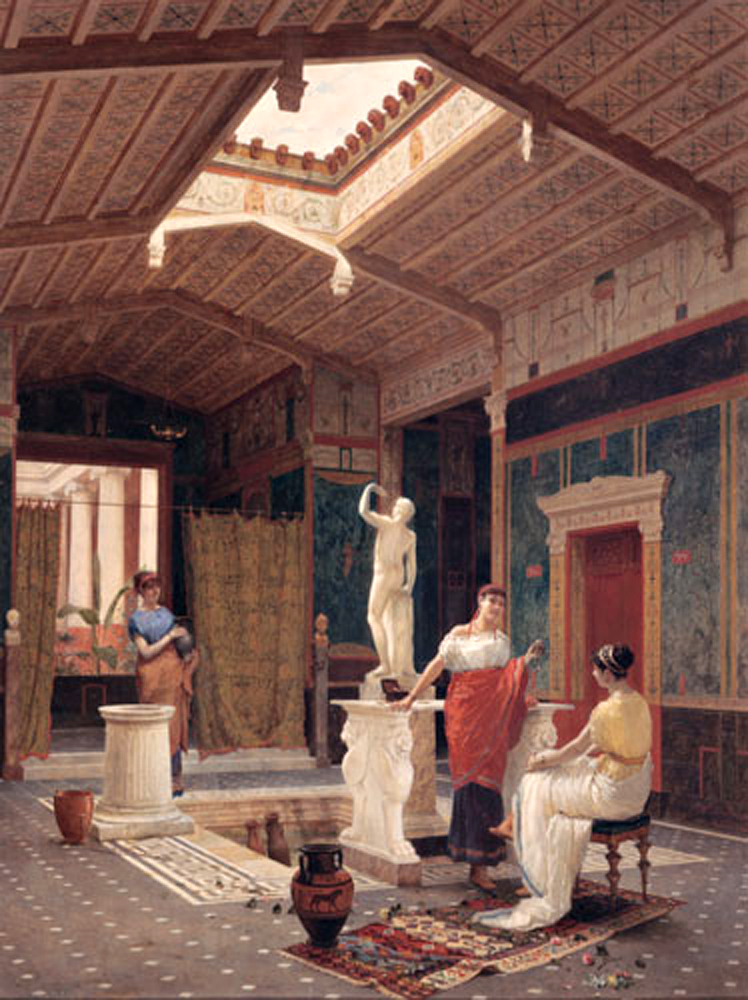
The atrium was one of those places where human connection and meaningful engagement happened in the Roman villa. Beyond the lavish feasts and opulent surroundings, what truly mattered was the sense of belonging and fellowship that permeated the space. In the atrium, guests were not just visitors—they were welcomed as friends, invited to share the common lifestyle and forge lasting bonds of camaraderie.
The Bibliotheca: Pursuit of Intellectual Enlightenment
In the Roman villa, bibliotheca represented a place for those who preferred leading an intellectual lifestyle. Stocked with scrolls and manuscripts, the library symbolized the intellectual prowess of its owner. Here, patrons engaged in scholarly debates, immersed themselves in philosophical discourse, or sought solitary reflection amidst the wisdom of ancient texts.
Reading in the Roman bibliotheca was not merely a solitary pursuit—it was a communal experience, rich with opportunities for discussion and debate. The atmosphere was one of camaraderie and intellectual curiosity, where the knowledge was shared freely among peers.
The Peristyle Garden: Oasis of Outdoor Recreation
Beyond the confines of the Roman villa‘s walls, there was a peristyle garden—a verdant oasis where the beauty of nature merged with the pleasures of physical recreation. Amidst manicured lawns and shaded walkways, guests indulged in sports, bird-watching, or the timeless art of gardening. The peristyle garden was a testament to the Romans’ appreciation for the natural world and their desire to harmonize with its rhythms.
The Triclinium: Culinary Extravaganza
No discussion of otium would be complete without mentioning the culinary delights that were a very important part of the Roman elite’s lifestyle. In the triclinium, or dining room, guests reclined on couches adorned with sumptuous textiles, feasting on a decadent array of meats, seafood, fruits, and pastries. The triclinium was a space where gastronomic pleasures converged with conviviality, creating an atmosphere of indulgence and camaraderie.
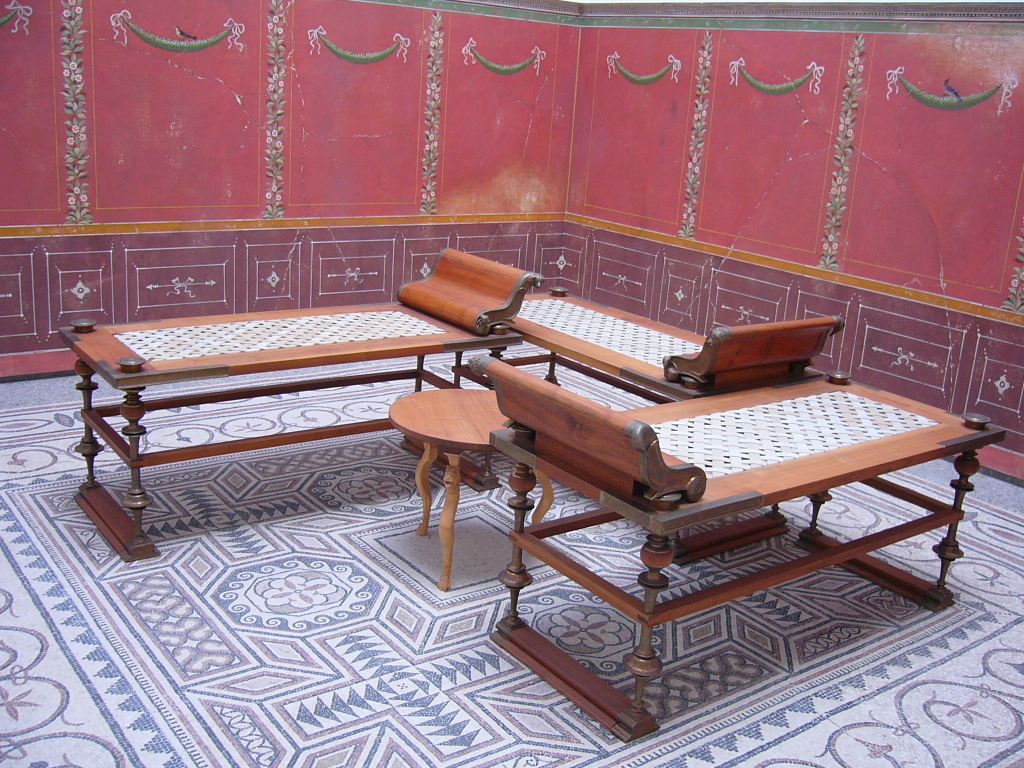
Art and Culture: The Soul of the Roman Villa
Roman villa served as a veritable gallery of fine art and craftsmanship, showcasing masterpieces from across the Empire. Paintings adorned the walls, depicting scenes of mythological splendor or pastoral tranquility, while intricate mosaics adorned the floors. Music and theater also held a central place in the Roman villa‘s cultural repertoire, with performances ranging from classical tragedies to bawdy comedies. The villa was a stage for artistic expression, where creativity flourished and the human spirit soared.
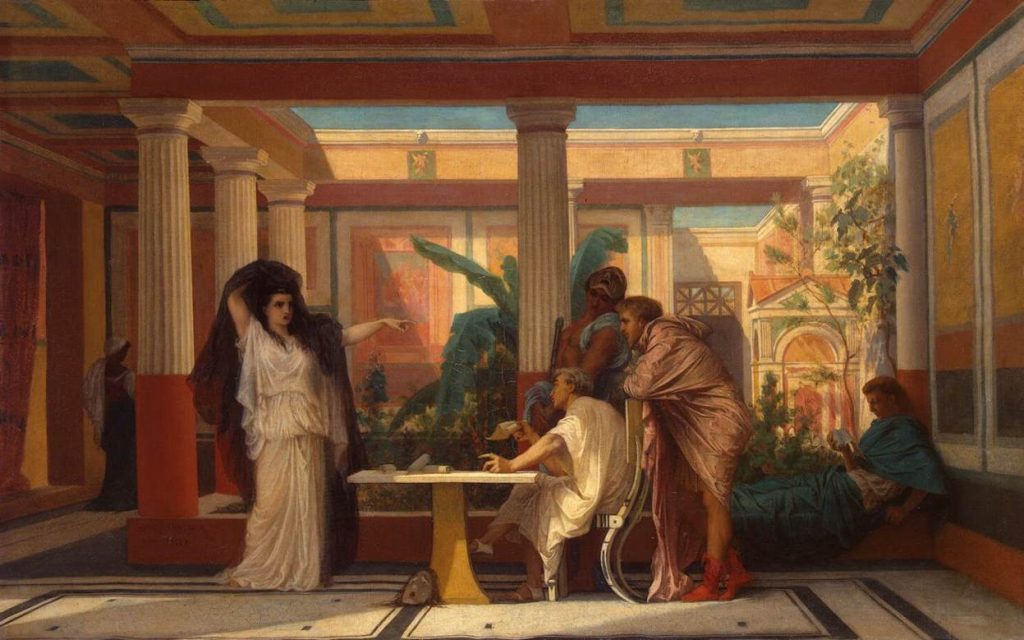
Criticism
Yet, for all its opulence and refinement, the concept of otium was not without its critics. Some viewed it as a decadent indulgence, a sign of moral decay and societal decadence. Others saw it as a necessary counterbalance to the rigors of public life, a means of rejuvenating the body and nourishing the soul. Marcus Tullius Cicero advises otium when the city life becomes too much. In his Pro Sestio, he uses the term otium cum dignitate (ease with dignity):
In truth, otium encompassed a spectrum of experiences, reflecting the complexities of human nature itself.
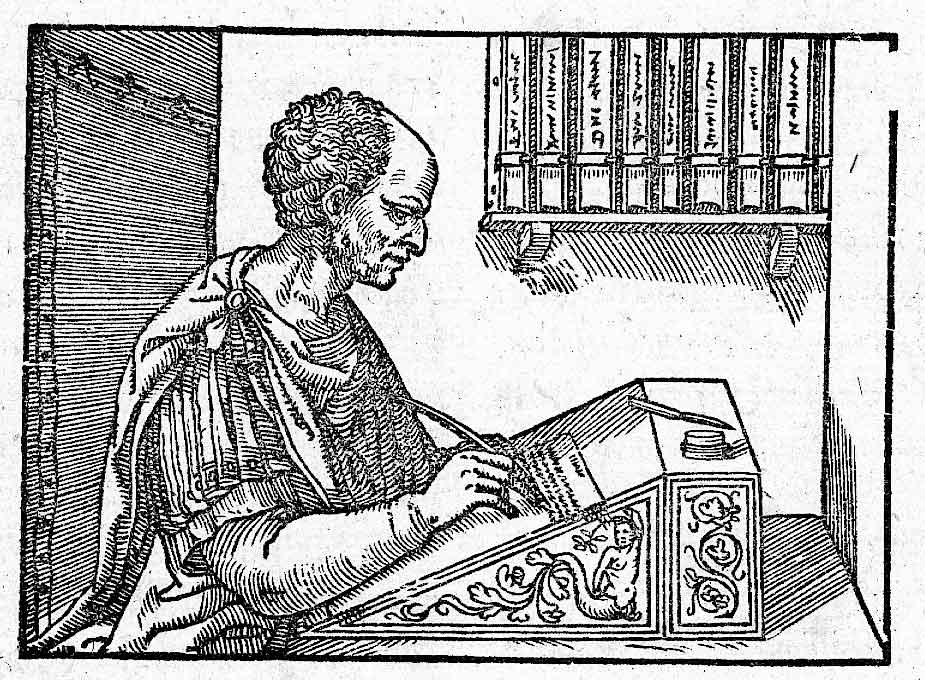
Otium serves as a testament to the Roman lifestyle, the concept involving leisure, beauty, and cultural enlightenment practiced in the Roman villa. Romans cultivated the art of embracing the simple joys of life and savoring each fleeting moment of leisure. Therefore, the Roman villa was the place of solace, inspiration, and lifestyle aspects that contributed to the well-being of both the body and the mind.
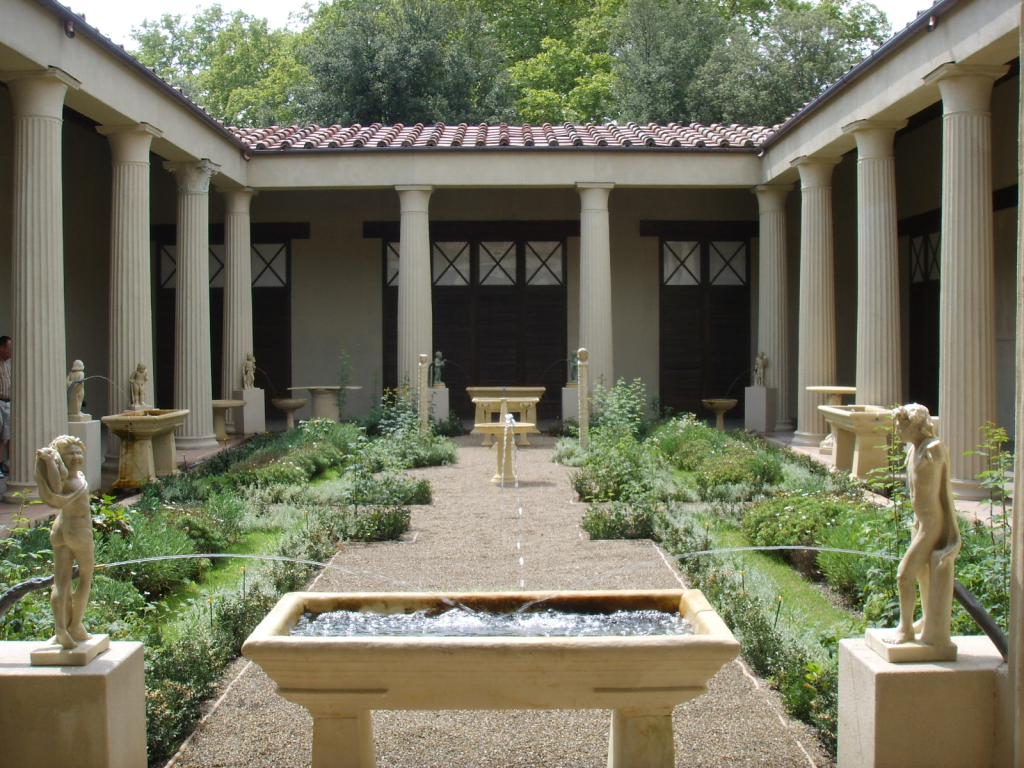

One thought on “Otium: Exploring Leisure in Roman Villa Culture”